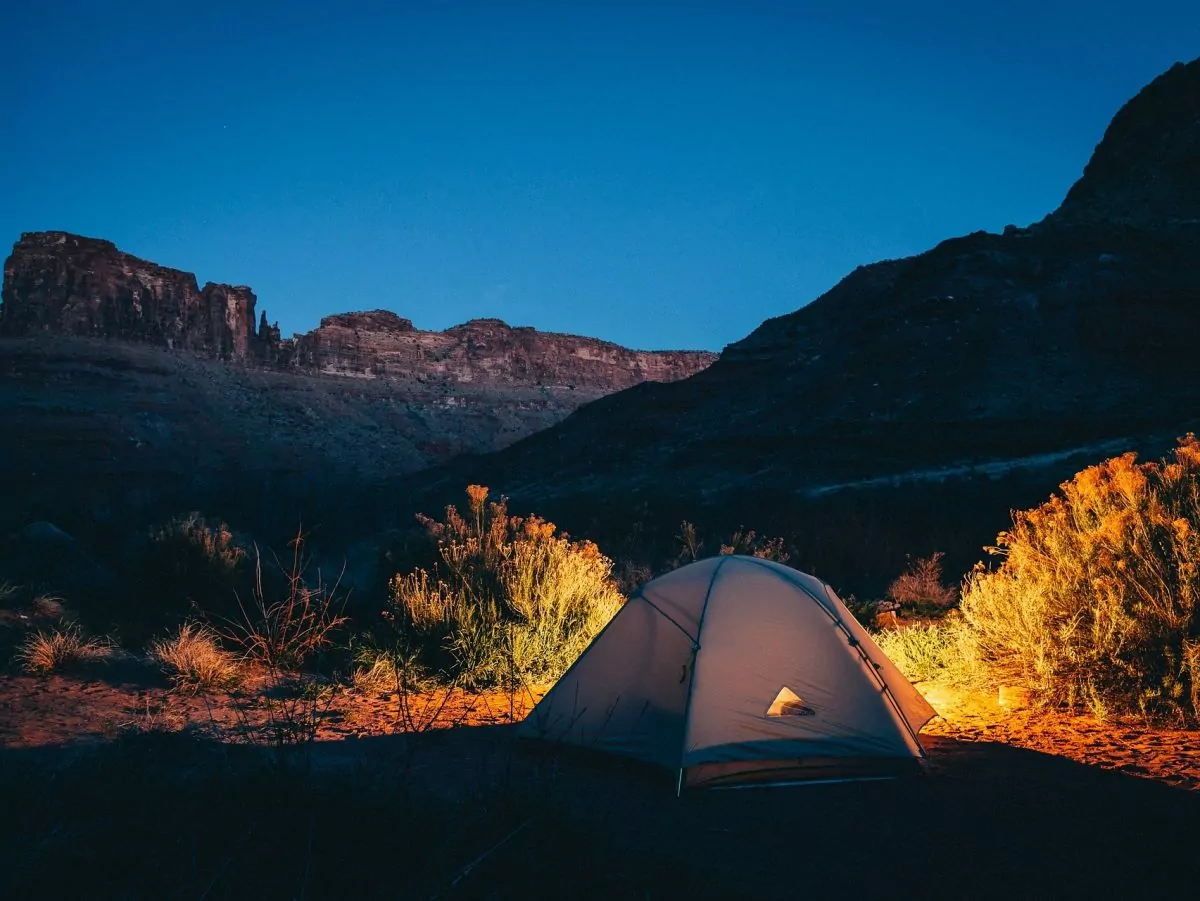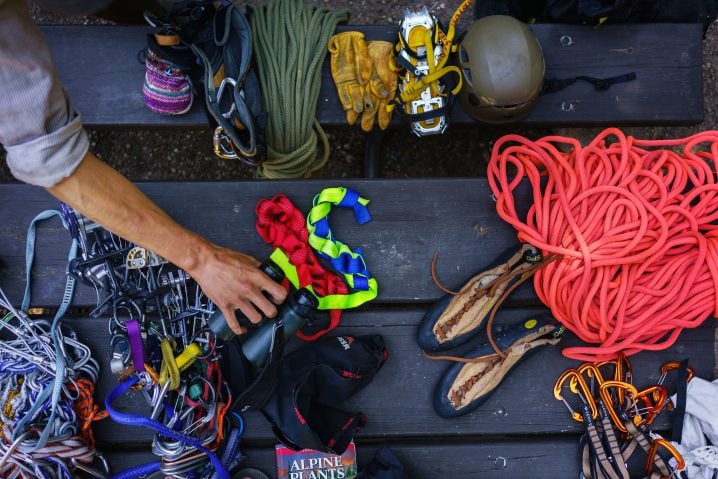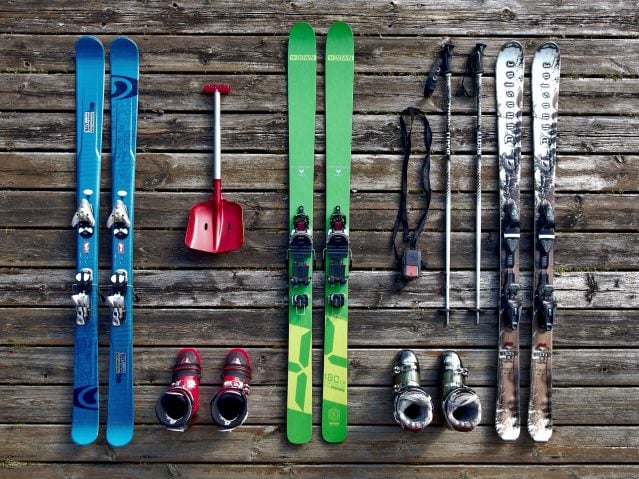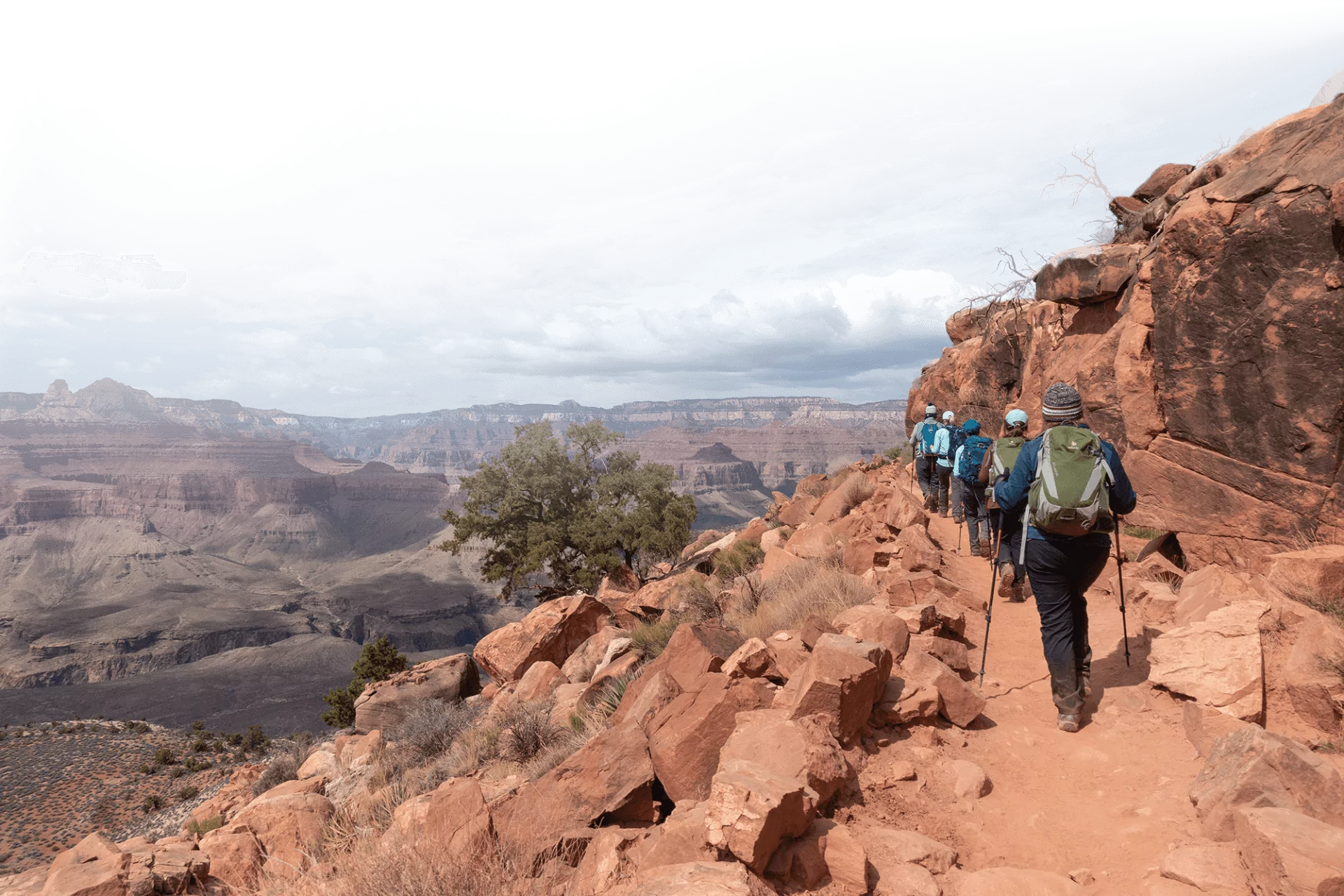
How To Buy Secondhand Gear for Any Outdoor Adventure
In 2014, I moved to Montana to learn how to ski at the ripe age of 23. I got a job up on the mountain so I didn’t have to fork out hundreds of dollars for a ski pass, and I collected secondhand outdoor gear from anyone and everyone I knew. The first day I took to the slopes, I wore a hand-me-down winter jacket three sizes too big, packed out ski boots from the 90s, and my roommate’s pink-and-green butterfly-covered children’s skis. As I pizza-d my way down a green run, I watched skiers fly by in well-fitted ski jackets and gloves that allowed them some dexterity. They were even wearing boots they didn’t need to stuff with toe warmers. I envied them but hey, at least I was learning to ski.
I soon outgrew the gear (but I did continue to use those boots for the rest of the season). When it was time to get my own skis, I was on a budget. I stopped by a local rental shop—hey Grizzly Outfitters!—and my friend pointed out a pair of the previous year’s demo skis. They had only been rented out a handful of times, and they were over 80 percent off their retail value. Score.
Since then, I’ve come to love secondhand outdoor gear. It allows people to try new outdoor sports without spending an entire paycheck. And not only does consignment gear make the outdoors (and new activities) more financially accessible, but shopping secondhand is more sustainable for our environment.
Award Winning USA Hiking Adventures
Why Buy Secondhand?
If you talk to anyone who spends a lot of time outside, the subject of gear is likely to come up quickly. Outdoor recreators love their gear, for good reason. It allows them to explore new places with relative ease and comfort. The invention of modern climbing gear allowed climbers to scale walls and peaks that people would have thought impossible in the 60s. A well-loved sleeping bag provides nights of endless joy in the backcountry, and an expertly-designed backpack can be the difference between an enjoyable outing and a back-aching suffer-fest. And if you’ve been planning your vacation for months, you don’t have to worry about clouds in the forecast when you’re equipped with waterproof rain gear and Goretex hiking boots.
Gear is essential for many outdoor activities. As new outdoorspeople flocked to the wilderness during the height of the pandemic, outdoor gear retailers thrived while other businesses struggled to stay afloat. But, we know that our throw-away consumer culture is having a significant impact on the health of our planet.
Maybe you’re a new backpacker or an experienced hiker trying to branch into mountaineering or climbing. Either way, outdoor gear isn’t cheap. In fact, it can be prohibitively expensive: gear prices are often why people don’t try new sports or why they stay home while they’re itching to pitch a tent in the wilderness. But now that you know about secondhand gear, why wait?
What outdoor Gear Can I Buy Secondhand?
You can find high quality secondhand outdoor gear for almost every sport. Skiing, climbing, backpacking—all of these activities are gear-intensive. And as people outgrow their gear or rental equipment goes out of season, secondhand shops work hard to repurposes these goods so they can see a second life. If you’re new to a sport, consignment gear is the way to go. Buying used can reduce your initial costs by over 70 percent.
Most outdoor equipment is perfectly fine to buy used. Backpacking packs, technical clothing, sleeping bags, stoves, tents, skis, ski boots, mountain bikes, a car rack, kayaks, rain layers—you name it. You should be able to find these goods at most price ranges if you look hard enough.
Is There Any Gear I Shouldn’t Buy Secondhand?

While you can snag solid deals on outdoor equipment at secondhand shops, some gear you may want to consider buying new—especially when it comes to technical sports such as climbing.
If the gear directly supports your life, you should be wary to buy it used. Climbing ropes, harnesses, webbing, and slings all get used pretty heavily, and it’s difficult to determine its safety rating without knowing its history. If you do buy this gear secondhand, make sure you can inspect it in person. Buy it from an individual, rather than a shop, so you can ask how it was treated, where it was stored, and how often it was used.
Helmets are another example. Unless you can inspect them firsthand and know that they haven’t taken any impact, you should buy new.
Socks and underwear? We’d prefer to buy them new, too.
Buying Secondhand: A How-To Guide
Local Consignment Shops
Local consignment shops are a wonderland of lightly-used gear waiting for a new home. Always the Adventure has a list of almost every used gear store in the U.S, and even if you can’t find one in your town, these shops make a great pre-adventure travel stop. Forgot your rain pants at home before your big trip? Check at the local secondhand store before buying new.
There are some wonderful gear consignment shops in some of our gateway towns: Second Wind Sports in Bozeman, Montana, the Wonderland Gear Exchange in Seattle, Washington, Snow Mountain River in Flagstaff, Arizona, Outdoor Gear Exchange in Burlington, Vermont, and Moab Gear Trader (do we need to say where?).
Also, if you live in an outdoor-friendly town—or are traveling through one—you can dig up some gems at generic thrift stores such as Savers or Goodwill. Depending on where you’re looking, these chains can stock brand name goods at majorly discounted prices.
Online Marketplaces
Facebook Groups
Online marketplaces are a great place to look for used gear, especially if you live in a town or city with proximity to the outdoors. Facebook groups such as your local “Outdoor Gear Exchange” or “Hiking,” “Climbing,” or “Biking” pages often have used gear for sale. You may even be able to find some free gear by posting on a “Buy Nothing” page in your area. These Facebook groups are dedicated to building community through their mission to “give where you live.”
Digital Newspapers
Local newspaper digital classified ads are a great place to look if people are active on that platform. For example, Salt Lake City’s KSL classifieds have a whole section devoted to “Outdoors and Sporting,” where you can search based on your desired gear.
And A Special Mention
Then there’s the Facebook group, “How Not To Outdoors Like a Basic B****”, which is challenging our consumer culture even more. Kiona, the founder of the page, advocates for inclusion and affordability in the outdoors space. This group helps expand people’s access to gear by offering gear exchanges, gear swaps, and even gear sponsorships. If you’ve always wanted to venture into the wilderness, but the financial obligation of buying gear is limiting, join this group! It’s also a great resource to find outdoor mentors so that when you venture outdoors, you learn new skills responsibly.
And while this isn’t online, another spot to look is your local climbing gym’s poster board! You can snag some cheap goodies from individuals in the community. Win-win, in our book.
Online Retail Consignment
Many outdoor brands have realized the benefits of offering secondhand outdoor gear to keep used products out of the landfill and get it into the hands of eager recreators. REI Outlet (or in-person REI garage sales), MEC Gear Swap, and Patagonia Wornwear are great places to start looking. Patagonia launched Wornwear in 2017 to repair and recycle their long-lasting gear. They aim to help the outdoor industry cut down on consumption. REI was also among the first to offer used gear, through their garage sales. They launched their online store in 2018, and have piloted a used gear pop-up store program in 2020. The first pop-up stores will be near Manhattan Beach, California and Conshohocken, Pennsylvania. Now, many other companies have created their own reuse and recycling program, like North Face Renewed and Arc’teryx Used Gear.
You can also find consignment goods on third-party websites like Geartrade and Outdoors Geek.
Give Your Secondhand Outdoor Gear Another Life
Not only can you find good deals on outdoor products at consignment shops and online, but you can also donate and sell your used gear to give it a second life. You could post on online marketplaces and groups, or bring your goods in to your local secondhand shop for a trade-in. If you have gear that needs a tune-up, many companies offer repair programs to help you get more use out of your precious belongings.
Do you have any favorite gear that you’ve outgrown, but you’d hate to see thrown away? Do you have friends you’re trying to convince to try backpacking but they don’t know where to start? Share this post and let us know your favorite piece of gear on social media!





